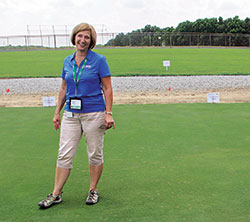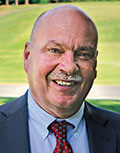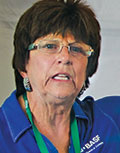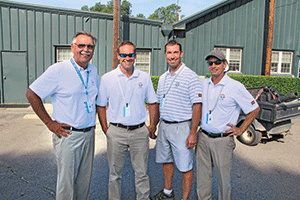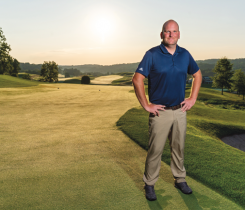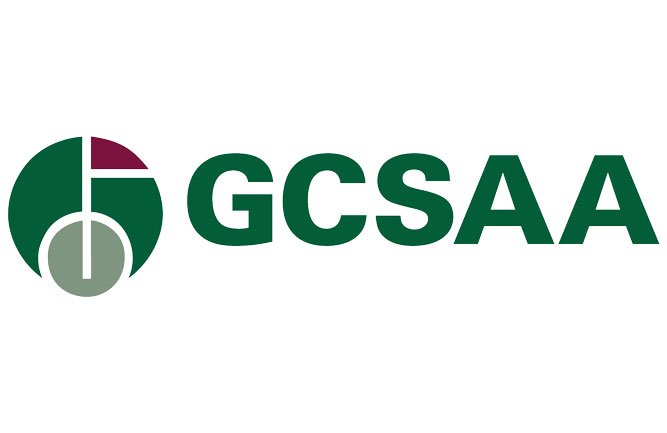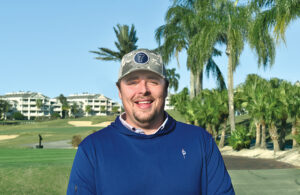Plant Health’s roots
From Germany to North Carolina to the local golf course, Plant Health is well traveled and well documented.
This might not be the home of Plant Health, but it’s at least where it spent a couple summer vacations as a kid.
Outside Raleigh in Holly Springs, N.C., there is a 68-acre farm. Opened in 1986 and dubbed by BASF the North Carolina Research Center, it hosts experimental research trials on everything from peanuts to turfgrass.
“Literally, this farm is where a lot of it starts in the early stages,” says Renee Keese, Ph.D., BASF’s biology project leader, research and development. “I get a numbered compound from Germany. We know a little bit about what it will do, but we have to figure out how to make it fit our market. I come out here and I run tests.”
From Germany to Holly Springs, N.C. Plant Health, better pack your bags.
License to kill
The weather can get extreme in this part of North Carolina — tough on turf, tough on crops. BASF uses the North Carolina Research Center to monitor and test wheat, corn, soybeans, strawberries and peaches. On the turf side, there are most types of sports turf, maintained at green and fairway height.
If Keese is the mastermind behind the operation, Glenn Oliver is the boots on the ground. As BASF’s biology area manager for North Carolina, South Carolina and Virginia, it’s his job to run the tests ordered by the big-brains sitting in BASF’s nicely air-conditioned headquarters in Research Triangle Park, N.C.
Not that Oliver is some slouch. With a B.S. in agronomy and a M.S. in weed science, both from North Carolina State University, the 68 acres of crops and turf are in more than capable hands. Oliver has been working for BASF for 15 years, and has had his current position for the last 12.
“I think people look at me like I’m crazy when I tell them what I do. I know my wife thinks I’m crazy,” laughs Oliver. “I get to look at a lot of exciting new chemistries. I get to see stuff before it’s labeled. It’s cutting-edge, all the time.”
Oliver isn’t a golfer himself, but he loves growing things. He’s even OK with killing things.
“These are experiments. We don’t know what’s going to happen. We might kill it,” he says. “It’s nice to be able to test these products where we might have failures. Then we tweak it.”
Keese, who on this day was concerned about a lack of dollar spot stress, echoes that sentiment.
“I can kill turf if I need to, whether it’s with an herbicide or a fungicide,” she says, sounding a little bit like James Bond, or maybe one of his villains. “I can test different turf varieties. I look at where the use rates are… can we put four times that rate out? Will it tolerate higher rates if someone makes an overlap? We can do a fair amount of turf screening early stage, before we start going out to the university and private contractors.”
Measuring Plant Health
Observing the turf’s response to aerification has been important to both Keese and Oliver these days. In the plot with the untreated turf, holes are still visible. In the plot treated with Lexicon, the holes seem to be closing much faster.
“We talk about when you have a stress; heat, cold, drought, mechanical,” Keese says, “This is where we are really starting to see the benefits of Plant Health benefits from something like Lexicon.”
BASF describes Plant Health as three pillars combining to make the plant more productive. Those pillars are 1) Increased plant and growth efficiency, 2) Disease control and 3) Increased tolerance to stress.
Dan Carrothers, marketing manager for BASF’s specialty products division, says his team is driven to learn how they can make their end-users more successful.
“I think (BASF) is the only manufacturer that has really tried to explain the science behind Plant Health,” he says. “Look at the root density, the recovery from aerification, the photosynthesis. We are tying to explain to people that all these things can be measured.”
One of the people tasked with measuring those results is Kathie Kalmowitz, market development specialist, BASF. Part of her job is watching not just the grass grow, but also watching its roots develop.
“All of our customers want something that is aesthetically pleasing. But if you have a good top, where is that coming from?” she asks. “You have to have a good foundation. When you have increased root development, your turfgrass can grow through (high heat and humidity) or through a day that is optimal.”
“They need innovation to address the changing disease profile and the demands of the industry,” says Nevin McDougal, senior vice president, BASF. “There is a demand for new solutions, new innovations. That fits really well for us, because we are all about innovation… we’re about addressing the changing needs of the
marketplace.”
Research and development
The Holly Springs location isn’t the only research farm Oliver looks over. He also has a larger farm called the Pine Level Research Farm (85 acres) as well as another research farm in the Carolina mountains, and a fourth on the Carolina coast.
Oliver typically stops in at the Holly Springs facility early in the mornings, treating turfgrass with fungicides, herbicides or plant growth regulators, then drives to Pine Level to work on such things as corn, soybeans and peanuts in mid-morning. The North Carolina Research Farm is used primarily for demonstration purposes, Oliver says, though Keese says that superintendents rarely visit the site. It’s her hope they can soon combine the Pinehurst/BASF experience with a visit to Holly Springs and the North Carolina Research Farm.
Oliver, who is quick with a chuckle and speaks with a Carolinas accent, agrees that superintendents should come out more often, and he hopes they do.
“We’re more than happy to see superintendents come out here and look at what we have,” Oliver says. “We can accommodate groups of 12 to 18, if they just give us a little head’s up.
“I just can’t show them the stuff that’s too experimental,” Oliver continues, laughing. “But BASF spends a lot of money on research and development, and superintendents love to see this stuff in action. They just need to give me a holler.”
The Pinehurst/BASF experience
In December of 2012, a new partnership was born: The Pinehurst/BASF experience. Going in, both parties were unsure what to expect.
“I had no idea — I don’t know if any of us had an idea as successful or as big as it was going to become when we first started talking about it,” says Pinehurst Resort’s Bob Farren, CGCS, director of golf course and grounds. “Having a relationship with these guys, having known them over the years and BASF as a company, was marvelous to engage them in a partnership, for their educational components here.”
At the center of the partnership are two former superintendents, now BASF employees: Brian Thompson, strategic account manager and Gary Myers, CGCS, Pinehurst project leader.
“I’m on-site here, we host about 33 groups a year, about 350 superintendents come to Pinehurst through the Pinehurst/BASF experience,” says Myers, now seven months into the job. “The typical program is two, two-and-a-half days. (Superintendents) get education, and the best part is they get to play No. 2 on the typical program. And we get to tell our story with our products.”
Sure, playing the course that just hosted back-to-back U.S. Opens is cool and a great lure for potential visiting superintendents. But the specialty products team at BASF stress that this trip, to them, is not about playing golf.
“It’s all about education from our point of view,” says Jon Sweat, director of BASF’s specialty products division. “We have a whole host of educational events where we bring in people to educate and show them why they should use these products.”
“We recognize that we need to be lockstep with our end-user,” echoes Dan Carrothers, marketing manager for BASF’s specialty products division. “I think if you look down the road, we’re going to take these two pillars… whether it’s Plant Health or focusing on a critical disease like dollar spot… and we’re going to use education and getting closer to the superintendent to tell our story.”
Both Thompson and Myers know their way around the Village of Pinehurst, Pinehurst No. 2 and especially the stable of BASF products.
“That’s really what we want to impress upon our customers: We’ve done our research, we’ve used our university cooperators, to ensure that these new technologies are going to help superintendents do their jobs more effectively, more efficiently,” Thompson says.
For Thompson, his favorite part of the job is meeting with people who he calls “the salt of the earth”: golf course
superintendents.
“It’s just great to inform them about another tool they can use. And to be at Pinehurst doing it? I feel like a kid in a candy shop,” he says. BASF launched two new products, Lexicon and Xemplar, and that has been a focus of much of their talks. Pinehurst was using BASF’s Heritage, now the BASF team has switched them over to Lexicon.
“From a fungicide standpoint they’re as close to all-encompassing as you can find — with the Lexicon product in particular,” Thompson says. “But also, with years of research that BASF has done with the Plant Health benefits, the side benefits that help that plant to grow more efficiently and respond to stress more resiliently.”
If there’s someone who knows how to respond to stress with resiliency, it’s Pinehurst’s Farren. Even with the U.S. Open in full swing, Farren was already thinking forward on the future of the Pinehurst/BASF experience.
“Our goal next year and going forward will be to find other ways to refresh what we offer from Pinehurst’s perspective. BASF is always refreshing what they offer to their clients and the turf industry,” he says. “I think if we can stay on our toes, we can continue a great relationship.”
Photos: Seth Jones






